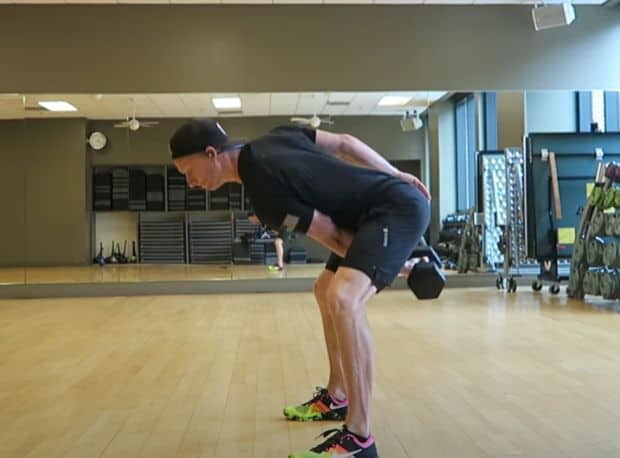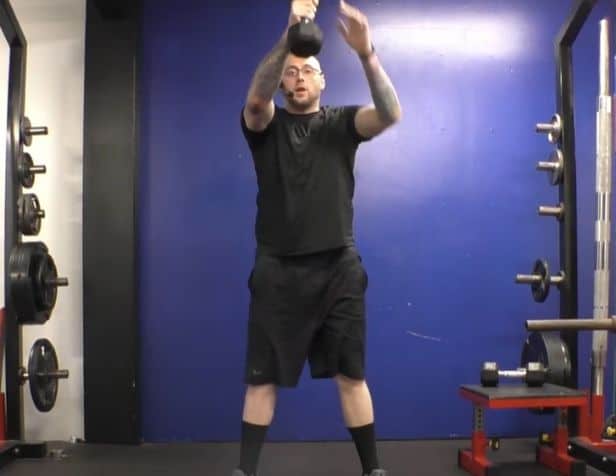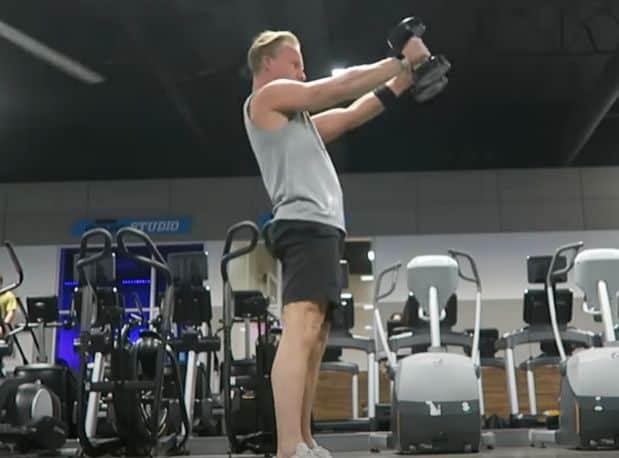5 Dumbbell Swing Workouts: Techniques and Benefits

Dumbbell swings can provide an intense full-body workout if you know the best exercise types and how to execute them. We are here to help you with just that.
If you’re looking for a good dumbbell workout, the dumbbell swing is a great way to start. Dumbbells are an easy and convenient alternative to kettlebells, and they can be just as effective.
Whether you’re looking at building muscle or burning calories, dumbbells can help you achieve every fitness goal when paired with the right exercises. We have put together some of the best dumbbell swing exercises for every one of your fitness requirements.
What is a dumbbell swing?
A dumbbell swing is a swinging exercise that involves holding a dumbbell with one or both hands and swinging it between your legs and up to shoulder height in a controlled motion. It is an effective arm swing exercise that targets the muscles of the back, legs, and shoulders.
Traditionally, swing exercises are performed with a kettlebell. Dumbbell swings do not deviate a lot from those. Here, you simply swap the equipment and perform kettlebell swings with dumbbell instead.
Variations of the dumbbell swing include the one-arm dumbbell swing and the single-arm dumbbell swing, and more.
How to do the dumbbell Swing?
You can safely and effectively perform the basic dumbbell swing by following the steps we have listed below. For the basic motion:
- Hold the weight in a firm grip with both your hands.
- Stand with your feet shoulder-width apart and toes pointed slightly outward.
- Keeping your core engaged, hinge at the hips to swing the weight between your legs.
- Swing the weight up to eye level, making sure to keep your arms straight.
- As you swing the dumbbell up, allow your hips and legs to drive the movement. Your arms should act as a guide, not the primary mover.
- As you swing the weight back down, bend your knees and hips, lowering your body into a squatting position.
- Repeat this motion 10-15 times before resting.
The key to doing this exercise perfectly is to use momentum, not muscle power. Remember to keep your posture straight, and your core engaged throughout the exercise. Do not strain your lower back by arching it as you swing the weights. Also, be sure to use proper form and start with a lighter weight before progressing to a heavier dumbbell.
What muscles do dumbbell swings work?
The swing exercises target both the upper and lower body, as well as the core. Depending on the type of exercise you are performing, the dumbbell swing can target and strengthen the hamstrings, glutes, obliques, quads, pecs and chest, upper traps, shoulders, and abs.
Dumbbell swing variations
While the dumbbell swing is a very basic motion, it still allows for considerable variation to provide a good workout. Here are the best dumbbell swing exercises for your body:
1. One-armed dumbbell swing
How to do
- Hold a lighter weight in one arm instead of a heavier one in both.
- Grip the dumbbell with one hand.
- Follow the stance and movement of the basic dumbbell swing.
- If you need more balance, extend your free arm outwards while you swing your dumbbell with the other.
- Repeat the movement with the other arm.

2. Switch arm dumbbell swing/Alternating Dumbbell Swing
How to do
- Start the same movement the same way as the one-arm swing.
- When your arm is close to chest height, switch the dumbbell from one hand to the other.
- Complete the swing with the other arm.

3. Double dumbbell swing/Dumbbell skier swing
How to do
- Hold two dumbbells by your side, with your palms facing your thighs.
- Bend your knees and hinge at the hips, and swing your dumbbells to your shoulder level.
- Swing the weights back to the starting position.

4. Woodchop dumbbell swing
How to do
- Start by standing with your feet shoulder-width apart.
- Hold a dumbbell with both hands.
- Swing the dumbbell up overhead to the right.
- Swing back down to the starting position.
- Now repeat the same movement on your left side.

5. Dumbbell lateral squat to swing
How to do
- Start by holding one dumbbell in each hand. Take a wide stance position, with your feet slightly wider than hip-width apart.
- Take a step out to the right side and swing both dumbbells up simultaneously.
- Next, bend at your knees and lower your hips to a squat position. Your dumbbells should swing down as you squat.
- As you rise up again, bring your right foot back to the starting position.
- Repeat the same movement towards your left side.

Note – These exercises are not recommended for people with lower back injuries.
Dumbbell swing sets and reps
If you are a beginner, and wondering how many sets and reps of dumbbell swings you should do, start with 2-3 sets of 8-15 repetitions. Remember to focus on your form and not the weight. You can gradually increase the number of sets, reps, and even the weight of your dumbbell as you go along. Once you get comfortable with the weight and the movement, follow the pattern in the table below to give yourself a good dumbbell swing exercise:
| Exercise | Reps | Sets |
| Basic dumbbell swing | 20 reps | 3 sets |
| One-armed dumbbell swing | 10 reps | 2 sets on each arm |
| Switch arm dumbbell swing | 15 reps | 3 sets |
| Double dumbbell swing | 10-15 reps | 3 sets |
| Woodchop dumbbell swing | 10-15 reps | 2 sets |
(Note: The number of reps and sets you can perform can vary depending on the age, weight, strength, and other physical conditions of the person performing the exercises. Do these exercises under the guidance and supervision of a fitness expert or a personal trainer.)
Dumbbell swings-proper form, movement, and breathing
Doing a dumbbell swing requires proper form and breathing pattern. The breath should be constant throughout the movement. The movement should be fluid and controlled. Doing so helps to prevent injury and maximize the benefits of the exercise, and improves strength, flexibility, and balance.
Form
Proper form is essential when doing a dumbbell swing to avoid injury and maximize results. To maintain proper form, keep the back straight, feet shoulder-width apart, and knees bent. Open your chest up, roll your shoulders, and keep your spine neutral.
Movement
Your movement should be fluid and controlled – DON’T jerk the weights up. Hinge at the hips and keep a flat back when you swing the dumbbells. Squeeze your glutes and drive your hips forward when propelling the dumbbell up. Allow momentum to swing the dumbbell back down. Make sure the dumbbell doesn’t touch the ground.
Breathing
The breathing pattern should be synchronized with the movement for best results. Inhale as you swing the weights up to eye level. Then, exhale as you lower the weights to the starting position. Remember to keep your core engaged throughout the entire movement. Proper breathing will help you maximize the benefits of this exercise.
Benefits of dumbbell swing
The dumbbell swing is an excellent form of strength training [1]American Heart Association: Strength and Resistance Training Exercise exercise for burning calories and improving muscle mass, strength, and endurance. This move targets multiple muscle groups, including the shoulders, back, core and legs. As a result, it helps tone the entire body and build core strength and stability. In addition, the dumbbell swing is an excellent cardiovascular exercise, making it ideal for burning calories and improving heart health.
Let’s take a detailed look at the benefits of Dumbbell swing workouts:
1. Tones the entire body
The dumbbell swing is an excellent move for working the glutes, hamstrings, and back. Not only does a dumbbell swing help to better shape your arms, legs, and buttocks, but it also helps to get rid of any unwanted flab. By incorporating the entire body in the movement, the dumbbell swing helps to develop a better muscular shape and definition. As a result, those who regularly perform dumbbell swings often find themselves in better physical shape overall.
2. Improves balance and coordination
One of the most important benefits of the dumbbell swing is that it can help improve balance and coordination. The swing is a very coordinated movement that requires you to use your legs, back, and arms simultaneously. This makes it a great way to improve your balance and coordination. Furthermore, the dumbbell swing can help to prevent injuries by strengthening the muscles around the joints.
3. Targets multiple muscle groups
The main muscle groups worked by a dumbbell swing are the quads, glutes, hamstrings, abs, biceps, as well as the muscles in the back. It is an excellent exercise for those who want to build strength, muscle [2]American Council on Exercise: 5 Benefits of Dumbbell Training mass, and overall fitness levels.
4. Strengthens core muscles
Dumbbell swings are a great way to strengthen your core muscles, including your abs and obliques. The swinging motion helps to engage these muscles, and the weight of the dumbbell provides resistance that helps to build strength. By regularly incorporating dumbbell swings into your workout routine, you can build a strong and healthy core which in turn can improve your balance and coordination.
5. Great cardio workout
The dumbbell swing is a great cardio workout that can help to boost your heart rate. It is a great way to get your heart rate up, regulate your breathing, and get your blood flowing.
6. You can do it practically anywhere
The dumbbell swing is a great exercise because you can do it practically anywhere. All you need is a dumbbell and some space to swing it. You can do it at the gym, at home, or even outdoors. It’s an easy and convenient way to get a good workout. So if you’re looking for an easy and convenient way to get a good workout, the dumbbell swing is the perfect exercise.
Tips to remember before and after dumbbell swing
- Before starting your dumbbell swing, it is important to warm up properly. A good way to warm up is to do some light cardio such as walking or jogging in place. Do some stretching, such as leg swings, arm circles, and torso twists.
- When performing the dumbbell swing, be sure to use proper form. Follow the instructions given above on the proper form movement and breathing to perform the swing safely and effectively.
- It is important to use a lightweight when first starting out. As you get stronger, you can increase your weight.
- After your workout, be sure to cool down properly. Do some light stretching and deep breathing exercises.
Dumbbell swings vs Kettlebell swings
Dumbbell swings and kettlebell swings are two popular exercises that target similar muscle groups and involve swinging weights.
While both exercises share some similarities, there are also some key differences between the two. Here is a detailed table outlining the differences and similarities between dumbbell swings and kettlebell swings:
| Aspect | Dumbbell Swings | Kettlebell Swings |
| Equipment | Dumbbell | Kettlebell |
| Grip | Overhand or Neutral | Overhand or Underhand |
| Weight Range | Light to Heavy | Light to Heavy |
| Swinging Motion | Vertical/Diagonal | Vertical/Diagonal |
| Muscle Groups | Back, legs, shoulders | Back, legs, shoulders |
| Difficulty Level | Both are considered intermediate level exercises | Kettlebell swings can offer more advanced variations due to its versatility |
| Versatility | Dumbbell swings are more limited in variation | Kettlebell swings can offer a wide range of variations |
Conclusion
Different types of dumbbell swings can provide you with different kinds of physical health benefits. Each exercise works different muscles in your arms, back, shoulders, and abs. Performing them regularly will help to improve your overall strength and fitness level. Plus, you will have a perfectly toned body that looks like a million bucks.
Choose the exercises that you think will work best for you and include them in your regular workout routine. Ideally, pick moves that target multiple muscle groups simultaneously for the best results. With a little practice, you’ll be swinging those dumbbells like a pro in no time.
FAQs
We have compiled a list of frequently asked questions about dumbbell swings to answer some of your doubts and questions regarding this exercise.
Are Dumbbell Swings Effective?
Yes, the dumbbell swing is an effective way to tone your arms, shoulders, back, and abs. It can also help to improve your overall strength and fitness levels.
How Many Dumbbell Swings Should I Do?
It is recommended that you do 15-20 repetitions of each exercise. However, you can adjust this number depending on your fitness level and the amount of time available for your workout.
Is The Dumbbell Swing As Good As The Kettlebell Swing?
Both kettlebell and dumbbell swings provide similar benefits. Both exercises are effective in toning the muscles and improving overall fitness levels. Ultimately, it comes down to personal preference. Some people prefer dumbbell swings because they are easier to control. Others prefer kettlebell swings because they provide a greater range of motion.
Do Dumbbell Swings Build Muscle?
Yes, dumbbell swings can help to build muscle. The exercise works the muscles in your arms, shoulders, back, and abs. By performing the exercise regularly, you can help to improve your overall strength and muscle mass.
What can I do instead of dumbbell swing?
If you’re looking for alternatives to the dumbbell swing, you can try the kettlebell swing, medicine ball slam, barbell deadlift, resistance band pull-through, or dumbbell clean and press. These exercises target similar muscle groups and can provide a good cardiovascular workout as well.
References
| ↑1 | American Heart Association: Strength and Resistance Training Exercise |
|---|---|
| ↑2 | American Council on Exercise: 5 Benefits of Dumbbell Training |







